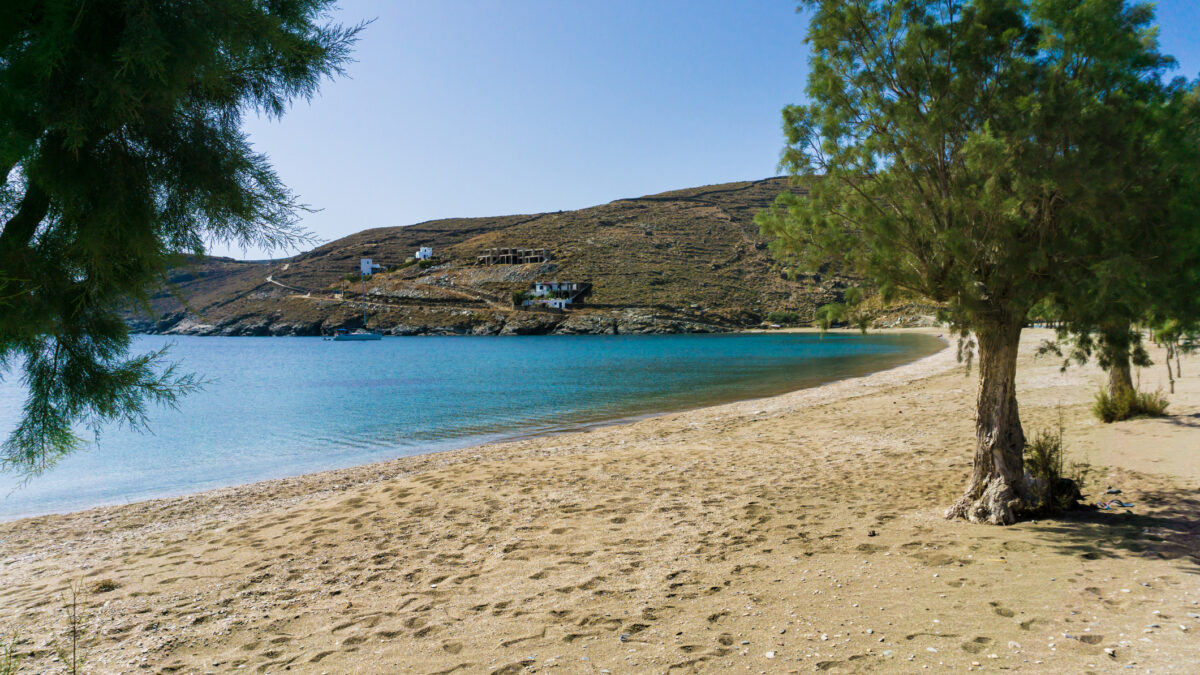Kythnos takes its name from the son of Apollo, Kythnos, a mythical king of the Dryopes tribe, who first settled the island in antiquity (14th century B.C.). The island was once known by the name Thermia, due to its famous hot springs.
Its main settlement is Chora, otherwise known as Mesaria, where the Cycladic element is prominent, with its stone-paved alleyways, taverns, coffee shops and confectioneries. The next most important town is Dryopida, also known as Chorio, which features unique residential architecture with characteristic arches, not to mention picturesque streets and old churches. There are 130 chapels scattered throughout Kythnos. The most important church on Kythnos is without a doubt Panagia Kanala in the settlement of the same name. Here, visitors can admire a miraculous icon painted in 1575 by the priest Emmanuel Skordilis, a prominent painter of the Cretan School. According to tradition, fishermen found the icon in their nets while trawling, and as a result the current church was built in 1869 to house it, replacing the older church that had stood on the same spot.
The island’s second major seaside settlement is Loutra, known for its hot springs – the only ones in the Cyclades – and the adjacent hydrotherapy centre that is still in use today. The centre’s architectural plan was drawn up by Christian Hansen and his assistant, Laurent, and implemented by the latter. Close by, visitors can admire the important mesolithic village of Maroula, a prime contender for the earliest settlement in the maritime Aegean. The island’s third seaside settlement, Merichas, is also its main port.
Kythnos has countless beaches to choose from, all with crystal-clear waters and ample shade under the tamarisks. Most famous among its beaches is Kolona, which is sure to impress visitors with its strip of sand that splits the sea in two, forming two picturesque sandy coves. Kythnos has only a few organised beaches: Episkopi, Apokrousi and Marinakia. Visitors looking for a bit of privacy can visit beaches such as Gaidouromantra and Simousi on the island’s southeastern side. Crossing through Chora in any direction, you are bound to find beautiful beaches. Some examples include Agios Dimitrios, Megali Ammos, Ammoudaki, and Agios Stefanos. Finally, the Katafyki cave at the island’s centre is also well worth a visit.
Cuisine
Kythnos has a wealth of local products and traditional recipes. The island’s thyme honey is considered among the best and most nutritious in the world. It is used in the production of the island’s famous almond sweets and pasteli.
Cheese is a major part of Kythnos’ cuisine: the island produces xino, a soft, unsalted cheese, trimma, which is salted and has a slightly sourer flavour, feta, and the famous kopanisti. The local cheeses accompany every traditional flavour of the island, as does the local wine. Kythnos also produces sausages and capers, while visitors to the island should not miss the opportunity to taste the local pork, the strapatsada with zucchini and the sun-dried fish.
Most prominent among the island’s traditional recipes are the cheese pie from Thermi, made with local cheeses, and sfouggato, a type of cheese fritter filled with xino or trimma cheese. Naturally, pies are a major part of the island’s cuisine: Thermi is especially well known for its pies filled with aromatic and flavourful wild greens. Kythnos has had a wine-making tradition since antiquity. Although the island’s vineyards were neglected for a number of years, that situation has now been reversed and local grape varieties such as the psarosyriko (a local grape variety that produces red wine) are now lovingly tended by people with a vision for the island.
How to get there
Kythnos is located in the western Cyclades, between Kea and Serifos, and is serviced by ferry from the ports of Piraeus and Rafina.










